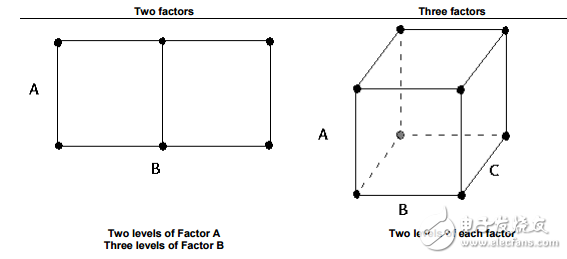
资料下载

DesignofExperimentsAllTopics详细介绍自动焊接的检验
Factorial Designs Overview Factorial Designs Overview Factorial designs allow for the simultaneous study of the effects that several factors may have on a process. When performing an experiment, varying the levels of the factors simultaneously rather than one at a time is efficient in terms of time and cost, and also allows for the study of interactions between the factors. Interactions are the driving force in many processes. Without the use of factorial experiments, important interactions may remain undetected. Screening designs In many process development and manufacturing applications, the number of potential input variables (factors) is large. Screening (process characterization) is used to reduce the number of input variables by identifying the key input variables or process conditions that affect product quality. This reduction allows you to focus process improvement efforts on the few really important variables, or the “vital few.” Screening may also suggest the “best” or optimal settings for these factors, and indicate whether or not curvature exists in the responses. Optimization experiments can then be done to determine the best settings and define the nature of the curvature. In industry, two-level full and fractional factorial designs, and Plackett-Burman designs are often used to “screen” for the really important factors that influence process output measures or product quality. These designs are useful for fitting firstorder models (which detect linear effects), and can provide information on the existence of second-order effects (curvature) when the design includes center points. In addition, general full factorial designs (designs with more than two-levels) may be used with small screening experiments. Full factorial designs In a full factorial experiment, responses are measured at all combinations of the experimental factor levels. The combinations of factor levels represent the conditions at which responses will be measured. Each experimental condition is a called a “run” and the response measurement an observation. The entire set of runs is the “design.” The following diagrams show two and three factor designs. The points represent a unique combination of factor levels. For example, in the two-factor design, the point on the lower left corner represents the experimental run when Factor A is set at its low level and Factor B is also set at its low level.

声明:本文内容及配图由入驻作者撰写或者入驻合作网站授权转载。文章观点仅代表作者本人,不代表电子发烧友网立场。文章及其配图仅供工程师学习之用,如有内容侵权或者其他违规问题,请联系本站处理。 举报投诉
- 相关下载
- 相关文章







